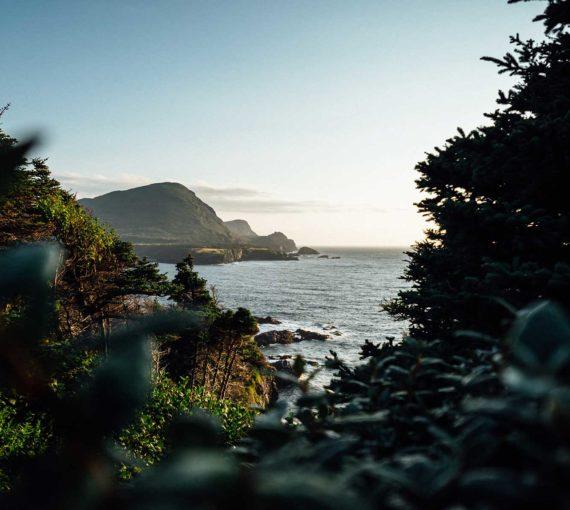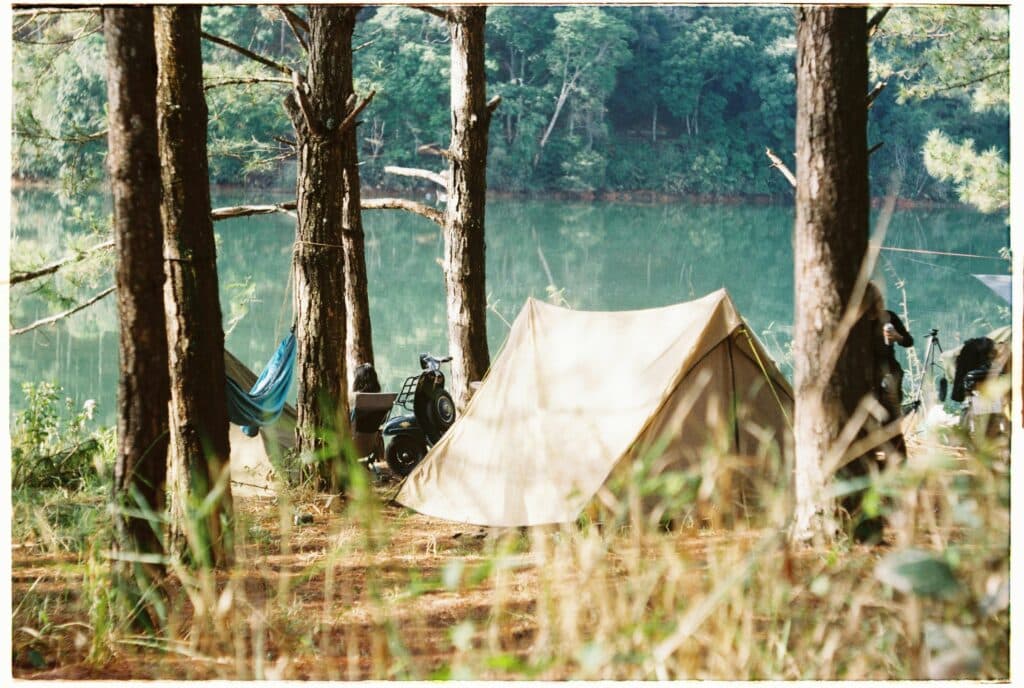
Camping is a great way to spend meaningful time outdoors. But it comes with the responsibility of protecting the surrounding land, water and air. (Photo: Gin via Pexels)
Camping is a great way to spend meaningful time in the great outdoors and connect with nature. But it comes with the responsibility of protecting the surrounding land, water and air.
Reap the benefits of nature while minimizing your impact. Follow these easy, accessible, affordable ways to camp responsibly and sustainably.
Support outdoor equity
Not everyone can easily access nature or enjoy camping experiences. This is a health and environmental justice issue.
Understanding your privilege fosters empathy and encourages actions that make outdoor activities more accessible to everyone. By acknowledging and acting on this privilege, you can contribute to a more equitable and just outdoor community.
Examples of barriers that limit access to nature:
- Distance. Reaching camping destinations can be difficult for those without access to a vehicle. Public transportation options to national and provincial parks are limited.
- Limited accessibility. Many recreational outdoor sites (e.g., parks, campsites, etc.) lack adequate accessibility features (e.g., wheelchair-accessible paths and ramps, restrooms and shower facilities, etc.).
- Economic constraints. Camping gear and park fees can be prohibitively expensive for low-income households.
- Cultural differences. Camping activities and spaces may not feel welcoming to people from some cultural backgrounds. Outdoor recreation programs have historically lacked inclusion of diverse cultural experiences, perspectives and histories.
- Lack of representation. Marketing and portrayals of outdoor activities such as camping lack diversity. People from marginalized backgrounds who don’t see themselves represented may feel excluded.
- Experience gaps. Those who haven’t be exposed to outdoor experiences may lack the skills and confidence to organize or participate in a camping trip. The idea of camping may seem daunting or inaccessible.
Community organizations and groups throughout Canada work to make recreation and outdoor wellness spaces more accessible for historically or systemically marginalized people. You can help create more inclusive, accessible outdoor spaces by supporting initiatives that promote them and by speaking up (to park rangers, excursion leaders, fellow campers, etc.) when you notice inequities and injustices.
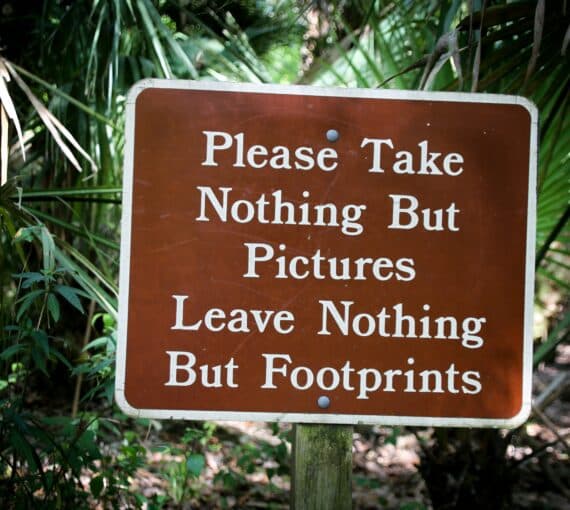
Follow the seven Leave No Trace principles
The Leave No Trace movement seeks to ensure “everyone enjoys the outdoors in a way that values and protects our environment now and for generations to come.”
The seven Leave No Trace principles:
- Plan ahead and prepare.
- Travel and camp on durable surfaces.
- Dispose of waste properly.
- Leave what you find.
- Minimize campfire impacts.
- Respect wildlife.
- Be considerate of others.
These principles are fundamental to camping responsibly and sustainably.
How to plan and pack for low-impact camping
To be a responsible and sustainable camper, you must be prepared and spend adequate time planning your trip. “Poor planning often results in a less enjoyable experience and damage to the natural and cultural resources.”
How to choose where to camp
Canada has more than 5,000 campgrounds, from front country and backcountry campsites to private and park campgrounds.
First, decide where you want to camp. Front country campsites aren’t remote from human populations, are easily accessible by vehicle and have on-site facilities. Backcountry campsites, in the wilderness or in areas with few humans, are typically only accessible by foot or paddle and have few to no facilities.
What to consider when planning where to camp:
- Permit requirements and fees. Private, Parks Canada and provincial park campgrounds may require advance booking, a permit and/or a nightly fee.
- Local camping. Reduce your travel emissions and explore your local area. You don’t need to travel far to have a memorable and enjoyable experience. Plus, you’ll develop a greater understanding and appreciation for nearby nature.
- Accessibility. If you or someone in your crew has specific needs (e.g., wheelchair access facilities, etc.), look for accessible and inclusive camping sites.
Respect and research the land
People often camp on lands that hold deep cultural and spiritual significance for Indigenous Peoples. Many parks we use for recreation came about when Indigenous Peoples were forcibly displaced and dispossessed from their territories in the name of “preserving nature” — a form of “green colonialism.”
Research the traditional territories of the Indigenous Peoples in the area you plan to camp.
Websites like Native-Land can help you and your camping crew learn about the area’s history and cultural significance. You’ll foster cultural awareness and contribute to a more inclusive, responsible camping experience.
If you’re backcountry camping, avoid sacred areas unless given explicit permission to visit. Many backcountry campsites are on federally or provincially owned “Crown” land where you can camp for free for up to 21 days. Most “Crown” properties are on unceded land, which means that Indigenous title has neither been surrendered nor acquired by the Crown. Many Indigenous communities have unresolved land claims and assert their rights and stewardship over traditional territories, which may overlap with “Crown” land. When and if possible, support and amplify the efforts of Indigenous nations’ efforts to govern their own territories and uphold their right to harvest, fish and hunt on their traditional territories.
Indigenous people have stewarded the lands since time immemorial, and the ‘public’ land that is now used for recreational purposes was once used for ceremony, harvesting, hunting, and other activities.
Wy Emily Tsang, The Adventure Gap
Even if you’re planning to camp at a provincial or national park or designated campsite, look for local guidelines and protocols set out by Indigenous land stewards. For some Indigenous communities, sustainability and protecting resources are important issues. If a community has expressed concern about visitors during states of emergency due to limited resources, road conditions or emergency response access, respect requests to stay away.
If possible, purchase camping permits, guide services or goods from Indigenous communities or Indigenous-owned businesses. Indigenous ecotourism is a growing industry that offers responsible ways of experiencing traditional territories.
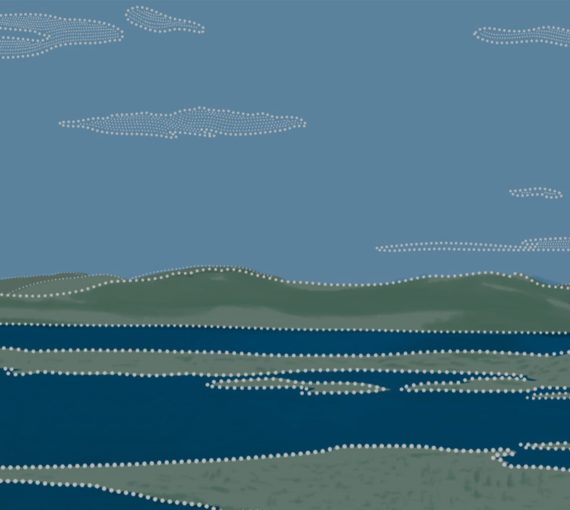
What is Land Back?
Land Back is an Indigenous-led movement with a rich and complex meaning. In the words of Isaac Murdoch, “Land Back is people returning back and finding their place in those systems of life.”
Choose eco-friendly camping gear
Deciding what gear you need depends on the season, location and length of your camping trip.
Remember: Whatever you pack in, you must pack out. So be mindful of how much you pack.
Rent or borrow gear
If you only go camping one or two times a year, consider borrowing gear from friends, family or renting from outdoor retailers. It’s a great way to save money and try out different products before buying.
Choose eco-friendly products and gear
Where you’re camping, for how long and in what conditions will determine what type of gear to bring. Research thoroughly to be safe and prepared.
Tips for building an eco-friendly packing list:
- Choose high-quality gear. When and if able, invest in high-quality gear that will withstand many seasons of use.
- Use solar powered products. Invest in solar powered portable chargers, lanterns, GPS devices and flashlights.
- Avoid single-use plastics. Instead of bringing disposables, bring reusable water bottles, silicon snack bags, beeswax wraps, camping bladders, bamboo utensils, etc.
- Look for camping gear made of organic or recycled materials. When possible, opt for organic cotton, recycled polyester or post-consumer plastic. Many sleeping bag and tent retailers carry products made of organic or recycled materials.
- Go toxic chemical free. Choose sleeping bags and pads free from harmful chemicals, such as flame retardants. Avoid bug sprays, sunscreens and other products containing chemicals harmful to you and the environment. Use non-toxic alternatives.
- Use biodegradable products. Choose biodegradable soaps, shampoos and body care products that are safe to use and dispose of. Make your own!
- Bring a water filter. Purifying water from rivers, lakes, streams, etc. reduces bottled water needs.
Repair or donate gear
Before landfilling broken or old gear, see if you can repair it. Look for community repair programs. Some outdoor gear retailers will repair rips and tears in garments, tents and sleeping bags and/or offer low-cost replacement parts for camping stoves, tent poles and more!
If you’re ready to retire gear that’s still usable, look for local donation programs or organizations taking donations (e.g., summer camps, tour groups, etc.). Sell your used gear to second-hand sports equipment stores or via online marketplaces.
If your gear is no longer useable, upcycle it! Use tent poles and netting to create garden structures. Sew a new stuff sack from old tent material. Build a kite! Search online for more ideas.
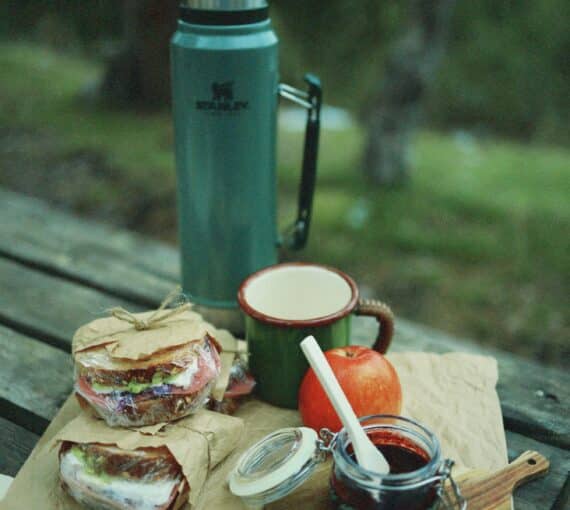
Pack low-waste food
Minimize food waste by meal planning for your camping trip.
- Buy bulk. Minimize package waste by buying food in bulk. Transfer items into reusable containers.
- Pre-prepare meals. Prepare meals in advance and store them in reusable containers. This reduces waste and makes campsite meal preparation easier.
- DIY dehydrated meals. Got access to a dehydrator? Make your own dehydrated meals! They’re easy to prepare and lightweight — perfect for backcountry adventures.
- Cook one-pot meals. Find recipes for nutritious, delicious one-pot meals. They’re easy to transport and share, and use less packaging and fewer dishes.
- Choose organic, local food. Organic and locally sourced ingredients ensure your food is free of synthetic pesticides and fertilizers.
How to minimize your impact while camping
At the campsite, you’re responsible for protecting and maintaining the integrity of the surrounding natural space.
Getting to the campsite
If you’re camping with a group, minimize your carbon emissions by carpooling to your destination. Or find out how to get there using public transportation. See if the park you’re staying in has a private shuttle.
Be mindful of where you set up your tent
When backcountry or wilderness camping, always set up your tent at least 60 metres from the nearest waterway. This will help minimize any potential contaminants from your campsite entering the water.
Camping without planning and forethought harms the environment. If you notice any areas showing signs of degradation (e.g., soil erosion, flattened vegetation, etc.), pitch your tent somewhere else. When surface vegetation or communities of organisms are trampled beyond recovery, it’s called “travel damage,” — sometimes the result of irresponsible camping practices. Always camp on durable surfaces (e.g., designated campsites, rock, gravel, dry grasses or snow).
Practice fire safety
Camping and campfires are often thought of as inseparable. What is camping if you can’t have a campfire?
Though campfires can be used for cooking and to create warmth, the effects of climate change have made summer heat waves and droughts more frequent, more intense and longer lasting. These conditions dry out vegetation, making it easier for wildfires to start and spread quickly.
- Follow regional and local fire regulations. Check for fire bans and restrictions. If there are no restrictions, check the fire danger in your area to help decide whether the weather is suitable for a safe campfire.
- In provincial and national parks, only build and tend campfires in designated areas (often marked with a fire ring or dugout).
- In the wilderness or backcountry, select a campfire spot at least five metres from tents, shrubs, trees, low-hanging branches or anything else that can burn, on an open and level surface protected against gusts of wind.
- Avoid using deadwood, which is important to forest ecosystems and biodiversity.
- Keep campfires small. They’re easier to control and less smoky.
- Never leave campfires unattended.
- Extinguish campfires properly. Use water to douse the fire thoroughly, then stir the ashes and douse again. Ensure ashes are cool to the touch before leaving the site.
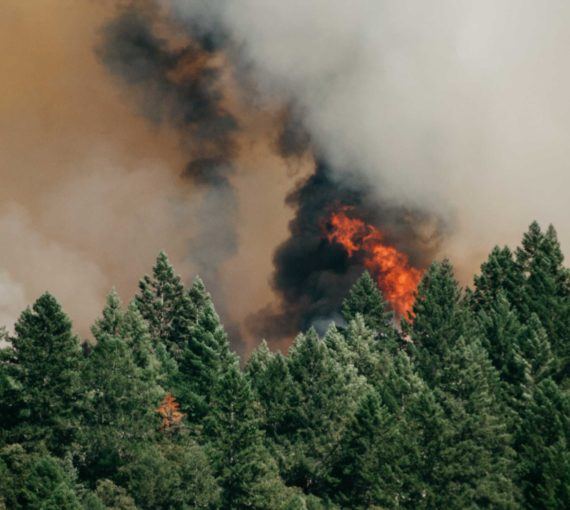
Burning questions about wildfires, climate change and fossil fuels
The science that links fossil fuels to climate change and wildfires is clear. However, public discourse is not. We’ve heard everything from legitimate questions to dubious conspiracy theories, so we’re here to clear things up.
Respect and protect wildlife
Respect for wildlife and natural habitats is a cornerstone of low-impact camping.
Observe wildlife from a distance
Wildlife sightings make camping experiences memorable. Always enjoy from a distance. Bring binoculars or a telephoto lens to capture the beauty of a wild animal in its natural environment.
Never feed wildlife. It can disrupt their natural behaviours and make them dependent on human food — and it’s illegal!
Stay alert and aware of your surroundings
Being alert and aware of your surroundings is crucial for various reasons, including wildlife safety. Surprising wildlife can distress the animal and ignite a potentially dangerous encounter. Be mindful of wildlife “signs,” such as fresh tracks, droppings or freshly scraped soil or tree bark. Avoid wearing earbuds or headphones when on trails — you need to hear your surroundings.
If you encounter wildlife signs, take proactive measures to prevent unexpected encounters. Make noise to alert animals of your presence. Travel in tight groups to appear larger. Stay calm to avoid escalating the situation.
Stick to designated trails
Stay on marked trails and in campsites to minimize your impact on the surrounding environment. This helps protect the landscape, including plant life, prevents soil erosion and reduces the likelihood of disturbing wildlife habitats.
Control pets
Dogs can stress wildlife such as wolves and coyotes, as they may be seen as a threat. Ensure pets are under control and on leash, to keep them and wildlife safe.
Maintain clean camping and picnic sites
Many know that food left out at a campsite or picnic area can attract wildlife. But few are aware of the importance of keeping the area scent-free. Many animals have keen senses of smell and may be attracted to camping and picnic areas through scents emitted from garbage, dishes, pots and pans, stoves, coolers, dog dishes — even toiletries (like toothpaste).
Reduce campsite and picnic area smells by storing all scented items in a designated storage locker or in your vehicle.
If these options aren’t available (e.g., in the backcountry), make a bear bag! All you need is a large bag or backpack, a rope longer than 15 metres and a heavy rock.
- Put all food and scented items into the bag.
- Tie one end of the rope to the bag (or connect it with a carabiner) and the other to a large rock.
- Choose a tree more than 60 metres away from your tent that has a sturdy branch at least four metres from the ground.
- Hold the loosely coiled rope slack in one hand and throw the rock above the sturdy branch.
- Hoist your food bag up with the rock end.
- Securely tie the rock end to the tree trunk.
Properly plan for and dispose of waste
When packing before you head out, and while you camp, be conscious of your waste. Improperly disposed of waste can harm surrounding water, wildlife and ecosystems.
This is especially important when backcountry or wilderness camping where there are no waste facilities.
- Pack with waste management in mind. Remove all unnecessary packaging from new gear, food, etc. Pack bags for storing waste while camping and to take out when you leave. Re-use plastic food packaging (e.g., bread bags, chip bags, etc.) to collect waste and recycling. Remember: You’ll have to secure or hang your trash at night to avoid attracting wildlife. (See bear bag instructions above.)
- Skip paper towels, toilet paper and wipes. Use recycled rags instead. Single-use paper products create unnecessary waste. Many people think that because paper towels and toilet paper are made of biodegradable materials they can be left in the wild after use. Wrong! Toilet paper can take one to three years to decompose in the most ideal conditions. Bring a separate bag to keep soiled rags. (Or make or invest in a backcountry bidet!)
- Deposit solid human waste in catholes. Catholes should be dug 15 to 20 centimetres deep and at least 60 metres from your camp, water and surrounding trails.
- Be mindful of wastewater. Reduce potential water contamination. Don’t wash dishes directly in a lake or stream. Carry wastewater 60 metres away from natural water sources and scatter it after it’s been strained. (Strained material is part of your waste.)
- Pack it in, pack it out. Inspect your campsite and surrounding area thoroughly for trash, spilled food and anything else you brought in.

